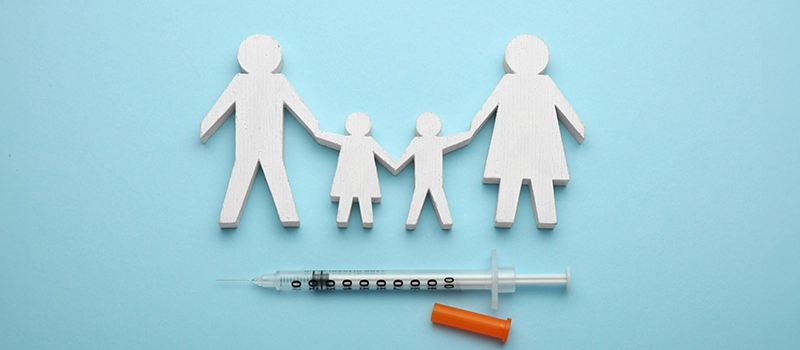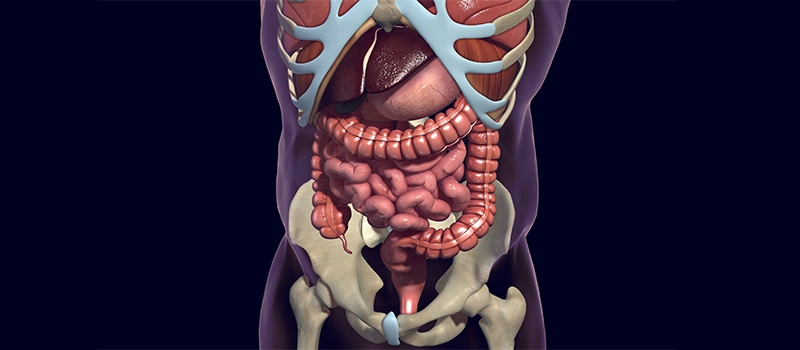
IAP Immunization Schedule for Routine Use
Immunization is a crucial factor in child survival and stands as one of the most cost-effective methods for safeguarding children’s lives and futures. India’s Universal Immunization Programme (UIP) is among the largest public health initiatives globally.
Each year, nearly 26 million newborns and 34 million pregnant women are included in the immunization efforts. To support this, over 13 million immunization sessions are conducted across the country to ensure that both children and pregnant women receive their necessary vaccines.
Over the last 20 years, India has made remarkable strides in health outcomes, especially in child health and immunization. The country was declared polio-free in 2014 and achieved maternal and neonatal tetanus in 2015.
New vaccines such as the Measles-Rubella vaccine, Pneumococcal Conjugate Vaccine (PCV), and Rotavirus Vaccine (RVV), have been introduced and widely implemented across the nation.
In India, infectious diseases remain a major cause of child mortality and morbidity, with nearly one million children dying before their fifth birthday each year. Many of these deaths are preventable through interventions such as breastfeeding, immunization, and access to timely medical treatment.
National Immunization Schedule
This table outlines the immunization schedule for pregnant women, infants, children, and adolescents, detailing the appropriate vaccines, their timing, dosage, administration route, and injection site. It provides a comprehensive guide to ensure timely and effective vaccination to protect against various infectious diseases. By following this schedule, you can help safeguard your child’s health and well-being throughout their developmental years.
| Vaccine | When to Give | Maximum Age | Dose | Route | Site |
| For Pregnant Women | |||||
| Tetanus & Adult Diphtheria (Td -1) | Early pregnancy | — | 0.5 ml | Intramuscular | Upper arm |
| Tetanus & Adult Diphtheria (Td -2) | 4 weeks after 1st dose of Td* | — | 0.5 ml | Intramuscular | Upper arm |
| Tetanus & Adult Diphtheria (Td Booster) | Received 2 doses of pregnancy in the last 3 years | — | 0.5 ml | Intramuscular | Upper arm |
| For Infants | |||||
| BCG (Bacillus Calmette Guerin) | At birth or within 1 year of age | Till 1 year | 0.1 ml (0.05 ml until 1 month) | Intradermal | Left upper arm |
| Hepatitis B – Birth Dose | At birth or within 24 hours | Till 1 year | 0.5 ml | Intramuscular | Antero-lateral side of mid-thigh |
| Oral Polio Vaccine (OPV) – 0 | At birth or within the first 15 days | Within 15 days | 2 drops | Oral | Oral |
| Oral Polio Vaccine (OPV) – 1, 2, 3 | 6 weeks, 10 weeks, 14 weeks | Till 5 years | 2 drops | Oral | Oral |
| Inactivated Polio Vaccine (IPV) 1 & 2 | 6 weeks, 14 weeks | 1 year | 0.1 ml | Intradermal | Right upper arm |
| Pentavalent Vaccine (Diphtheria, Pertussis, Tetanus, Hepatitis B, Hib) – 1, 2 & 3 | 6 weeks, 10 weeks, 14 weeks | 1 year | 0.5 ml | Intramuscular | Antero-lateral side of mid-thigh |
| Rotavirus Vaccine (RVV) 1, 2 & 3 | At 6 weeks (1st dose), 10 weeks (2nd dose), 14 weeks (3rd dose) | 1 year | 5 drops (lyophilized vaccine) | Oral | Oral |
| Pneumococcal Vaccine (PCV) 1, 2 & Booster | At 6 weeks (1st dose), 14 weeks (2nd dose), 9 months (booster) | 1 year | 0.5 ml | Intramuscular | Antero-lateral side of mid-thigh |
| Measles-Rubella (MR) 1 | 9 completed months to 12 months. Given up to 5 years if not received | 5 years | 0.5 ml | Subcutaneous | Right upper arm |
| Vitamin A (1st dose) | At 9 completed months | 5 years | 1 ml (1 lakh IU) | Oral | Oral |
| Japanese Encephalitis (1st Dose)*** | At 9 completed months – 12 months | 15 years | 0.5 ml | Subcutaneous (live vaccine) / Intramuscular (killed) | Left upper arm / Antero-lateral side of mid-thigh |
| For Children and Adolescents | |||||
| Diphtheria Pertussis Tetanus (DPT) Booster 1 | 16-24 months | 7 years | 0.5 ml | Intramuscular | Antero-lateral side of mid-thigh |
| MR 2 | 16-24 months | 5 years | 0.5 ml | Subcutaneous | Right upper arm |
| OPV Booster | 16-24 months | 5 years | 2 drops | Oral | Oral |
| Japanese Encephalitis***(if applicable) | 16-24 months | 15 years | 0.5 ml | Subcutaneous | Left upper arm |
| Vitamin A***(2nd to 9th dose) | 18 months (2nd dose), then every 6 months up to 5 years | 5 years | 2 ml (2 lakh IU) | Oral | Oral |
| Diphtheria Pertussis Tetanus Booster (DPT) 2 | 5-6 years | 7 years | 0.5 ml | Intramuscular | Upper arm |
| Tetanus & Adult Diphtheria | 10 years & 16 years | 16 years | 0.5 ml | Intramuscular | Upper arm |
Note:
- Td -1: Initial dose of Tetanus & Diphtheria
- Japanese Encephalitis (JE) vaccination is given based on regional guidelines and availability.
- Vitamin A and JE vaccines may vary depending on the region and specific health policies.
Updates on Pentavalent Vaccine
The Government of India is introducing the pentavalent vaccine into the national immunization program in selected states. This vaccine offers protection against five serious diseases: Diphtheria, Pertussis, Tetanus, Hepatitis B, and Hib. While DPT (Diphtheria, Pertussis, and Tetanus) and Hepatitis vaccines are already part of routine immunization, the Hib vaccine is a new addition.
The Hib vaccine helps prevent severe illnesses caused by Haemophilus influenzae type b, such as pneumonia, meningitis, bacteremia, epiglottitis, and septic arthritis. By combining these vaccines into one pentavalent shot, the number of injections a child receives is reduced while providing comprehension protection.
Important points to remember:
The pentavalent vaccine will replace the current Hepatitis B and DPT primary vaccination schedule in the immunization program. However, the Hepatitis B birth dose will still be administered within 2 hours of birth in institutional settings. DPT boosters at 16-24 months and 5-6 years will remain unchanged.
The revised immunization schedule is as follows:
| Vaccine | Schedule |
| BCG (Bacillus Calmette-Guerin) | At Birth |
| Hepatitis B Birth Dose | At Birth or within 24 hours |
| Oral Polio Vaccine (OPV) – 0 | At Birth or within the first 15 days |
| Pentavalent (DPT + Hep B + Hib) | 6 weeks, 10 weeks, 14 weeks |
| Oral Polio Vaccine (OPV) | 6 weeks, 10 weeks, 14 weeks |
| Measles-Rubella (MR) | 9-12 months |
| Vitamin A | At 9 completed months |
| DPT Booster | 16-24 months |
| OPV Booster | 16-24 months |
| Measles 2 | 16-24 months |
| DPT Booster 2 | 5-6 years |
Note: Measles 2 refers to the second dose of the Measles-Rubella vaccine.
Major Key Updates in Recommendations for IAP Immunization Timetable 2020/21
Polio Immunization
- A booster dose of the injectable polio vaccine (IPV) is recommended for children ages 4-6 years.
- The critical role of IPV in the immunization schedule is reaffirmed.
Inactivated Influenza Vaccines
- A standard dose of 15 mcg (0.5 mL) of inactivated influenza vaccines is recommended for all children over 6 months of age.
Varicella Vaccine
- The second dose of the varicella vaccine should ideally be given 3-6 months after the first dose.
New Vaccine Introductions
- DTaP/IPV Combination Vaccine: Tetraxim
- Quadrivalent Conjugate Meningococcal Vaccine: Menveo
- Monoclonal Antibody Cocktail for Post-Exposure Prophylaxis of Rabies: Twinrab
- Conjugate (CRM 197) Typhoid Vaccine: Typhi BEV
- 10-Valent Pneumococcal Conjugate Vaccine: Pneumosil
IAP- ACVIP Recommendations on Newer Vaccines
- Menevo Vaccine: Approved for use in individuals aged 2-55 years. Its application is recommended only in specific situations, as previously outlined.
- Typhibev Vaccine: Approved for a single dose in individuals over 6 months and up to 45 years of age. There is no recommendation for a booster dose.
- Rabies Management: Recommends using monoclonal antibodies (mABs) over rabies immune globulins (RIGs) for category 3 bite management. Human monoclonal rabies antibodies (Rabieshield) and murine cocktail monoclonal rabies antibodies (Twinrab) are available in India and approved for post-exposure prophylaxis.
- Tetraxim: Approved for use as the second DPT/IPV booster at 4-6 years of age.
- Pneumosil: Approved for use in children up to 2 years of age with a 3+1 schedule, including a booster between 12-18 months.
- Penumosil Use Beyond 2 Years: Currently, the ACVIP does not recommend Pneumosil for use beyond 2 years of age due to a lack of studies in the 2-5 years age group.
IAP Recommended Vaccination for High-risk Children
Vaccines
- Meningococcal Vaccine
- Japanese Encephalitis (JE) Vaccine
- Oral Cholera Vaccine
- Rabies Vaccine
- Yellow Fever Vaccine
- Pneumococcal Polysaccharide Vaccine (PPSV 23)
High-Risk Conditions
- Congenital or acquired immunodeficiency (including HIV infection, immunosuppressive therapy, radiation)
- Chronic cardiac conditions
- Chronic pulmonary conditions (including asthma if treated with prolonged high-dose oral corticosteroids).
- Chronic systemic diseases (including renal conditions like nephrotic syndrome, hematological disorders, hepatic diseases, and diabetes mellitus).
- Functional or anatomical asplenia/hyposplenia.
- Cerebrospinal fluid leaks and cochlear implants (for pneumococcal infections).
Specific High-Risk Groups
- Children with Pets at Home: Rabies Vaccine
- Residents of JE Endemic Areas: Japanese Encephalitis Vaccine
- During Cholera Outbreaks: Oral Cholera Vaccine
- Travelers: Rabies Vaccine, Meningococcal Vaccine, Yellow Fever Vaccine
Frequently Asked Questions (FAQs)
Q1. What are the benefits of timely vaccination according to the IAP immunization schedule?
Ans. Timely vaccination helps build strong immunization against diseases, ensures optimal vaccine effectiveness, and maintains high immunization coverage.
Q2. How can parents manage the cost of vaccines and find out if any vaccines are expensive?
Ans. Check with healthcare providers or the Department of Health for vaccine costs. Many insurance plans cover vaccines and public health programs may offer financial assistance.
Q3. What should parents know about booster immunization and booster tetanus vaccination?
Ans. Booster immunization maintains long-term immunity. For example: a booster tetanus vaccination is recommended every 10 years.
Q4. How does the IAP immunization schedule address catch-up vaccination for missed doses?
Ans. The schedule provides guidelines for catch-up vaccination to ensure children receive necessary doses even if they miss their initial schedule.
Related post


















































